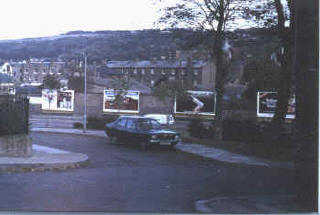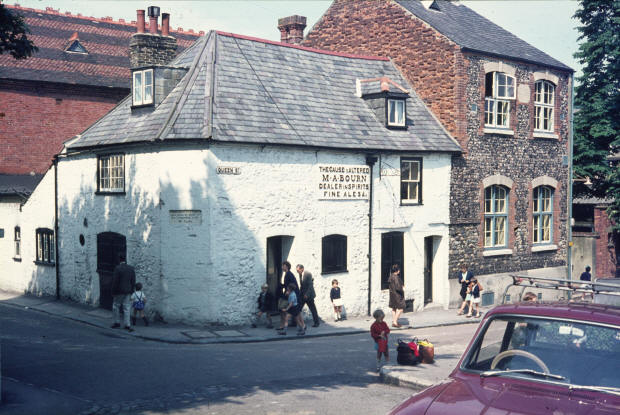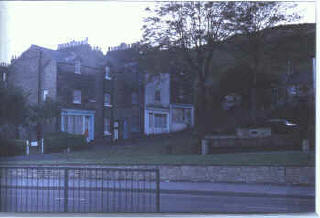| Pub Index |
The Cause is Altered |
|
|
According to Smith (1991), this establishment had previously been known as the Blacksmith's Arms and later as the Carpenter's Arms. It was a licensed house before 1826 and was said to have been more than 300 years old when time was called for the last time on 22nd March 1969. It stood just inside the old town wall at Cow Gate; a stone in the wall recorded the removal of the gate in 1776. It is reputed to have been linked by a tunnel to at least one other local hostelry to enable the smugglers to escape capture. Smith suggests that it was known as the Carpenter's Arms as early as 1805. There are a number of accounts of how this pub came to get its name: one suggests that the landlord changed his allegiance in the Civil War. My favourite explanation derives from the position of the house adjacent to the Cow Gate in the old town wall, through which cattle were brought in to market. It is said that, when questioned as to why they were drinking on their way to market, the cowmen would reply "The cows is 'alted, so why shouldn't I?" The plaque on the corner read: "Here stood Cow Gate The large sign read: "THE CAUSE IS ALTERED The pub was demolished to make way for a dual carriageway linking Folkestone Road to Townwall Street to take the dock traffic away from the town centre. It was claimed that the site was needed for one end of a pedestrian footbridge across the new road and it was because of this that Dover Corporation gave permission for its demolition; no bridge was ever built across this road. After it had been demolished, the course of the road was altered, and any bridge would have completely missed the pub! The picture below (left) shows the same corner after the new road was completed.
|
||
 |
|
|
|
The view above (right) shows clearly how far the pub was from the new road. It stood opposite the row of shops at the top of the hill in the centre of the picture, behind the walled seat on the green. |
||

